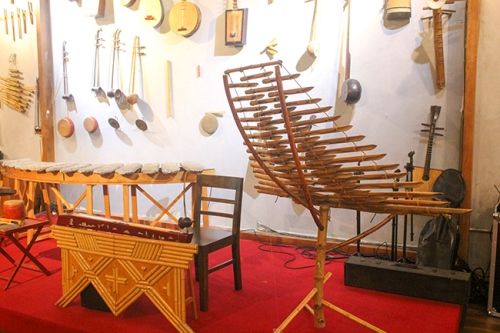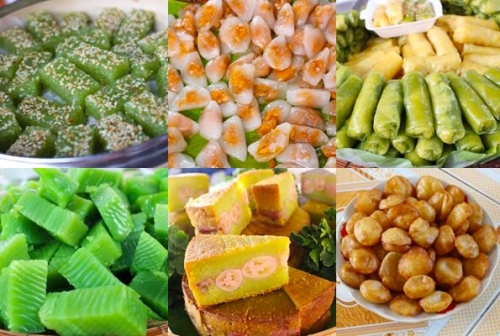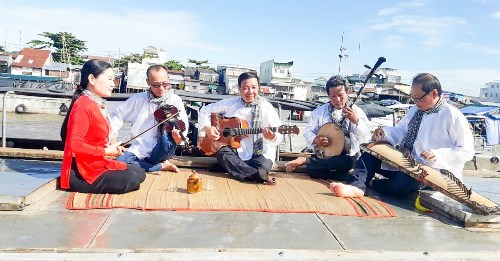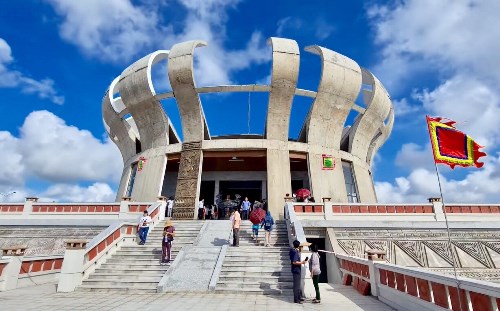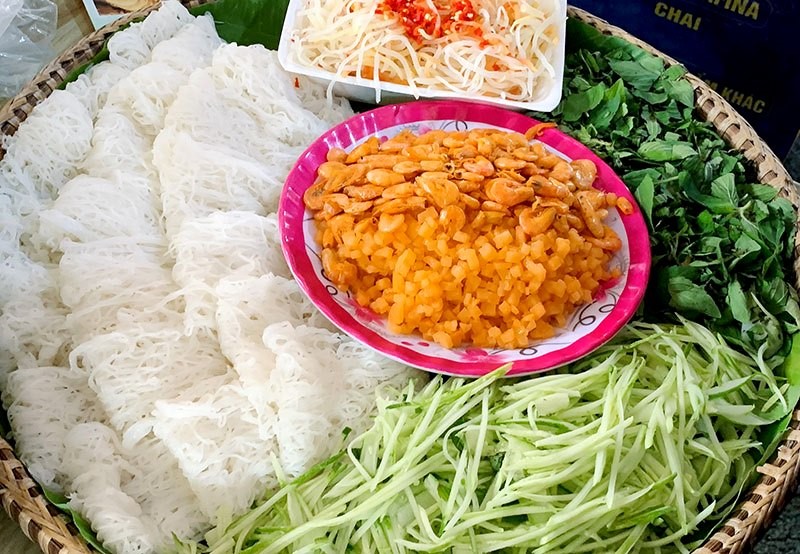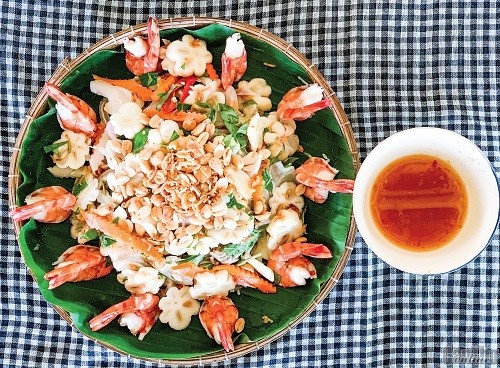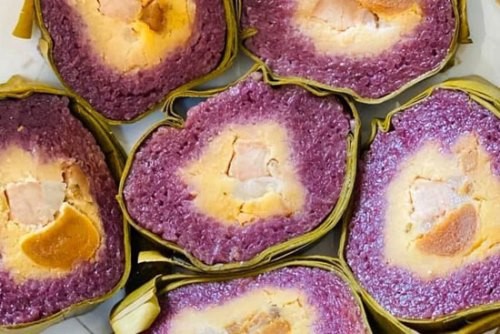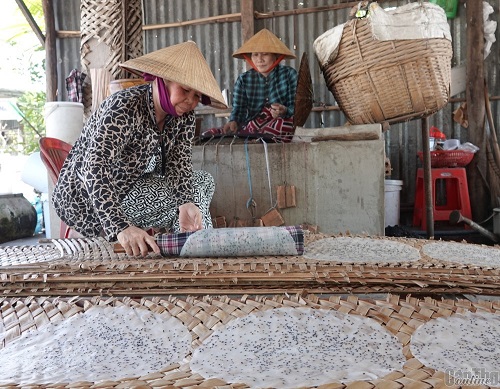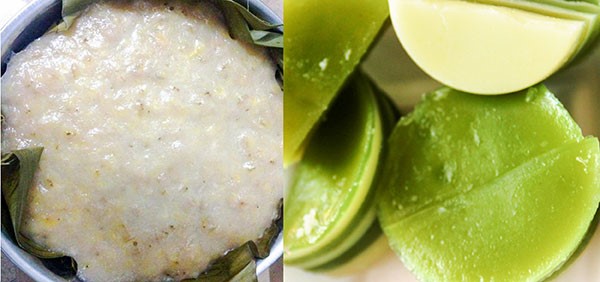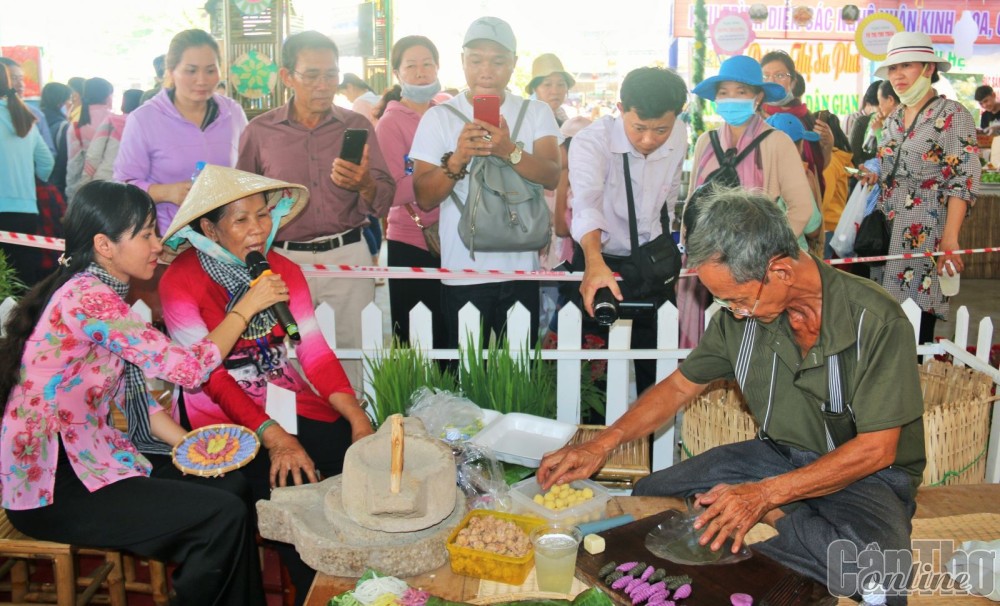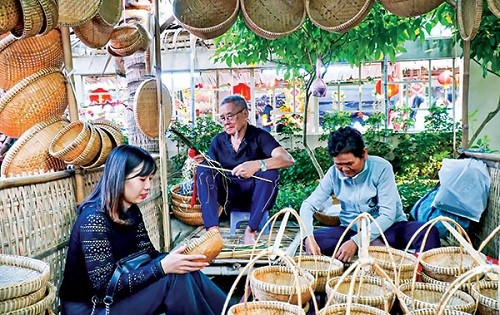
In the past, the Southern region had immense rice fields where birds could stretch their wings flying high, so goods exchange and trading were limited. Due to one-crop rice farming, farmers here took advantage of their leisure time to make some more agricultural and fishing gear to earn a living.
Most of the items for daily activities were self-sufficient and made from locally available materials. In high land, there were ropes of rattan, stalks of eagle trees, palm leaves ....; In the low land, bamboo gardens around the house, and even hyacinths could become raw materials.
Therefore, it can be said that bamboo knitting is practiced by everyone especially old men in the Mekong Delta. Their products always receive very few complaints because they are very smart, beautiful, and durable.
“Ðươn” and “đát” means bamboo knitting, but their characteristics are different. “Ðươn” means that the sticks are stuck together into sheets of a certain size by threading them horizontally and vertically. “Đát” is a similar kind of knitting, but smaller sticks are attached with bigger ones to increase the firmness in the outer part of “mê” (or the sheet) where the rims of baskets are skilfully tightened in perfect circles. Therefore, not all people can know both of these bamboo knitting types.
“Ðươn” has various and complicated types. Firstly, “long mốt” bamboo knitting to make “cái sề” (bamboo lattice baskets) is quite simple by knitting one stick over another until it is finished. Similar rule is applied for “long hai” bamboo knitting in making fruit baskets, fish baskets, or sitting mats. However, the main difference is that they use 2 sticks over the other two. “Long ba” or “long thúng” knitting to make grain baskets is more complicated, taking 2 sticks to put over 3 sticks, and then taking 4 sticks consecutively. It is told that a couple paid a visit to their father-in-law. Pointing at the bundle of bamboo sticks in the corner, the father-in-law asked his son to make a “mủng” (small-sized rice basket) to bring home. The man did not know how to make some kinds of rice baskets but still tried his best. While he was still confused with all the materials, his wife on the hammock started to sing lullabies:
“Ầu ơ... con cu nó đậu nhánh mè,
Bắt nhị bắt tứ mà đè chữ tam ơ...”
(A turtle dove sits on the sesame tree; catch two, catch four, and put over three). Listening to her singing, he quickly understood that his wife tried to tell him the method of bamboo knitting and started his task. First, he took 2 sticks, slipped the stick over; then counted 3 sticks, but did nothing with these three. Next, he took the other 4 sticks to slip them over; then pressed 3 sticks. After that, he took 2 sticks and continued as told until he finished the task.
To make fish baskets either small or big, “long sen” bamboo knitting is used (“long mốt” is used for the bottom of the basket, and “long hai” of the basket rim).
“long thừa” bamboo knitting is used to make a sieve or sifter. At first, start with 2 horizontal sticks and 2 vertical ones in the center and work them out in 4 directions. One traditional saying “lỗi long thừa lỗi ra” means that the reason for children to be naughty is usually from the family: parents cannot teach their children or neglect their duty of educating children.
Knitting a sieve, it is necessary to make the round corners so that rice grains will center when sieving rice. Sieves are made using “trảng lòng” method, flat bottom; used to classify the rice grains. When you sieve, you use 2 hands to move the sieve both hands. The smaller ones fall on the mat; the bigger ones stay on the sieve surface. “Giần” is another kind of sieve with small holes, and it is used for getting off broken rice or dirt. Women are experts in sieving due to their better skills than men.

Tools made from bamboo knitting are close to Vietnamese life. Photo: Artisans guide young people on how to sieve rice. Photo: DUY KHÔI
Making a betel basket is similar to making a vegetable basket, but the betel one has a vertical bamboo base in a round or cross shape to help balance the betel basket. It has a cover and is used for materials for making clothes. Therefore, it has another name “rổ may” (basket for sewing stuff) or it can be used for cakes or fruit trays on engagement or wedding. Therefore, “long bối” knitting requires a lot of skills and care. Only very experienced people can make it.
If you want to make buckets for bailing or carrying water to be beautiful with pointed bottom, you need to have technical skillfulness.
“Ðát” bamboo knitting is much more difficult, and not all people who know how to “đươn” can know how to it. People often tell those who are new to this kind of bamboo knitting the folk-song above as a reminder of how different it is from “đươn”.
In fact, đát means knitting of the rims of the sheet attached with smaller sticks or ropes to make the products smarter and stronger.
Bamboo knitting products in rural areas in the South are very diverse. Depending on the type of raw materials, people in the past made dozens or even hundreds of products of all sizes. Bamboo could be used to make baskets, sieves, skeps, rice mills, bamboo-plaited dustpans, bamboo rice stores, fish traps, walls, washing areas... Palm tree leaves can be knitted to make hand fans. Water hyacinth stalks can be used to make baskets, carpets, cushions. Eagle grass is used to make cushions, sleeping bags, hats, school bags, carrying baskets, “cà ròn” (small) bags, sails ceilings... Rattan is used to making hammocks, pillows, chairs, worship statues (such as statues of Bodhisattva, Avalokiteśvara Bodhisattva in Tay An Pagoda in Sam Mountain.) Reeds are beaten soft and knitted to be a bamboo screen for drying chopped medicinal herbs, etc.
In the past, every family used to make their own their daily tools. Nowadays, although there are many cheap and beautiful aluminum and plastic products, bamboo knitting products are so unique due to their superiority (especially in terms of environmental protection), so they are still popular in rural markets, even in export markets. Bamboo knitting has created jobs for thousands of workers, mainly making profits from their physical labor, because most of the raw materials are "home-grown" locally available, cheap, even somewhat considered rubbish. For example, water hyacinths were once thought to grow very quickly and very difficult to eradicate. On the water, they prevented the movement of boats and boats. In the fields, they competed against rice for nutrients. However, they now have become precious thanks to this knitting craft. Products made from hyacinth stalks for export are very popular.
Because of that, today the saying, “Cùng nghề đươn thúng, túng nghề đươn nia” (if you have found no job to earn for a living, you can do bamboo knitting.) does not seem to be appropriate
Source: Can Tho Newspaper - Translated by Diep Truong





